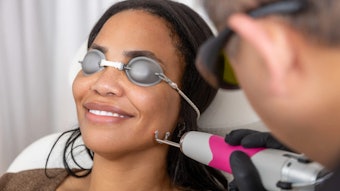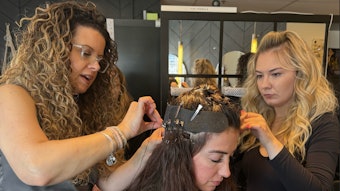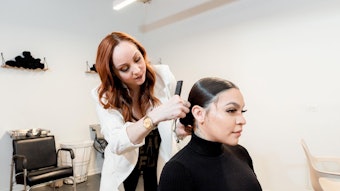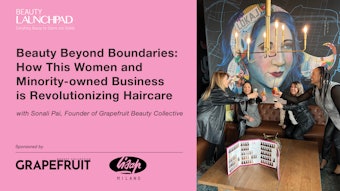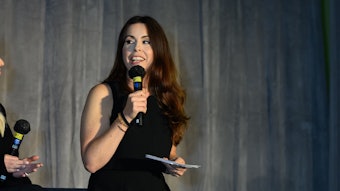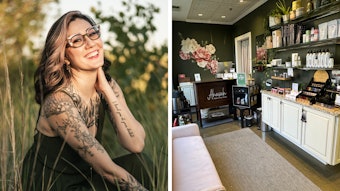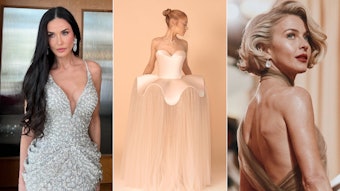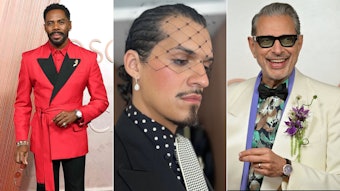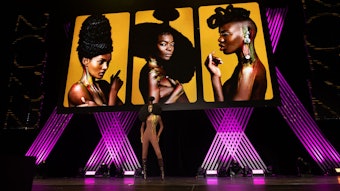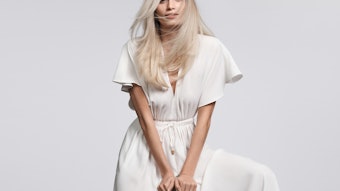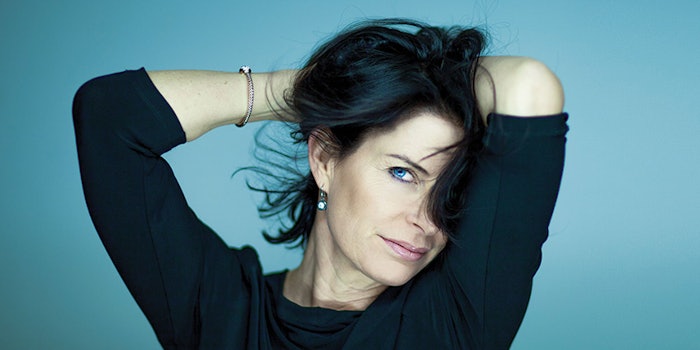
The passing of time brings about many physical changes, and hair isn’t exempt from its effects. As we mature, tress texture, color, volume and shine tend to shift and fade—but those transformations needn’t be traumatic. Hair color, quantity and quality can be preserved by taking certain styling steps while following basic healthy-living tips. Our experts weigh in on the biology of hair aging.
Cause and Effect
“There are three main reasons for why hair aging occurs,” says Kenneth Vigue, Redavid director of marketing and education. The first and most common encompasses internal factors, including genes, diet and medication. Menopause is a contributor to women’s hair transformation starting in their forties, as the sex hormones that stimulate follicle-fiber growth tend to dwindle. Over time, fibers become thinner, often falling out and no longer regenerating. “Family history can’t be altered, and genetics also play a role when it comes to pigment,” says Cherry Petenbrink, CLICS creative director and Olivia Garden artistic director. “If one or both parents turned gray early in life, chances are you’ll follow that same pattern.” The second cause consists of environmental factors, including exposure to chemicals, pollution, salt and sun. “People with active lifestyles often find themselves in environments that promote hair aging, particularly come summer,” says Vigue. “That ranges from the photoaging effects and molecular breakdown caused by excessive UV damage to salt and chlorine buildup.” Finally, mechanical factors play their part in the tress-aging process. “Years of wear and tear caused by thermal tools like blowdryers and styling irons, in addition to the overuse of chemicals found in straightening treatments or perms, can lead to less youthful-looking hair,” says Petenbrink.
Signs of Aging Strands
Graying
Whether you were in your twenties or forties when you spotted your first gray strand, loss of saturation is an inevitable fact of life. Melanocyte cells that infuse hair with color eventually stop producing pigment. Stress on the sympathetic nervous system, poor nutrition and a deficit of essential vitamins and minerals can all hasten this process, but the bottom line is melanin doesn’t generate forever. Most studies agree on the rule of fifties: Half the population will have fifty percent gray hair by age fifty.
Thinning/Texture
“Hair gets thinner as you get older, and its texture can also change,” says Sonya Dove, Wella Professionals global artist. That’s because shorter follicle life cycles stop replacing old strands with new ones as people hit their forties and fifties. Thinning patterns vary, with men experiencing more male-pattern baldness around hairlines and crowns, and women tending to see uniform loss around the scalp. Fiber diameters also alter, growing larger for the first few decades before steadily decreasing in size, which can lead to loss of volume or even a change in existing curl patterns.
Dryness
Excessive oil production may be a marker of puberty, but when most of us hit middle age, both skin and hair begin to tend toward dryness. This is due to shifting hormones that slow down sebum production. Natural oils keep strands looking smooth, which means loss of moisture may result in the unwanted appearance of flyaways and frizz.
Combating Hair Aging
Luckily, there are solutions to the hair-aging problem. “I like to start my graying clients with a demipermanent hair color,” says Petenbrink. “That covers fifty percent or less and blends fifty percent and higher without changing hair’s structure.” Scalp health is an essential prerequisite to shiny, voluminous-looking tresses, so opt for products containing ingredients that increase blood flow while nixing impurities. “Cedarwood oil boasts those qualities naturally, and is phenomenal for cleansing scalps and hair so they can thrive and breathe,” says Vigue. “Certain oils, including orchid oil, can also smooth down cuticles to infuse luster and tame flyaways.” And while it may be easier said than done, making healthy lifestyle choices can help hair—and bodies—look and feel their best. “Attempt to keep stress to a minimum and eat a good diet rich in protein, iron, vitamins and minerals,” says Dove. Cheers to many years of youthful-looking strands.
Continue reading Beauty Launchpad's October digital magazine for a variety of antiaging tress treatments.
